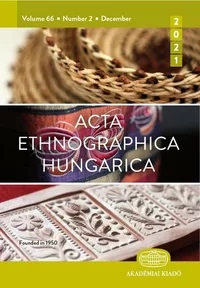Etnodizajn and Folkstar Souvenirs: Polish Experiences in Uses of “Folk Art” in the 21st Century
Etnodizajn and Folkstar Souvenirs: Polish Experiences in Uses of “Folk Art” in the 21st Century
Author(s): Ewa KlekotSubject(s): Customs / Folklore
Published by: Akadémiai Kiadó
Keywords: folk style; design; souvenirs; folk art; cultural appropriation
Summary/Abstract: The present paper offers a critical reflection on folk inspirations in Polish design in the early 21st century. It discusses the question of folk as an artistic form, pointing to conceptualizations of folk style and its formal qualities within the field of modern artistic production to which design and craft practices belong. It also touches on the role of the rural actors involved in the processes of the construction of folklore and their attitude towards folk conceived as esthetics, artistic form, and style. For rural producers, folk style was a question of conscious choice, sometimes motivated by conformism and sometimes by a deliberate effort to contribute to local/class/national self-presentation, very often in contradiction to the individual's own taste and that of their peers. The paper then examines the involvement of Polish folk-inspired design (etnodizajn) in the early 21st century with national self-presentation, as well as the various folk (lore)-inspired design strategies followed by contemporary Polish designers. It concludes with the observation that 21st-century design practices drawing on folkloric inspiration are part of a long sequence of cultural appropriations, where appropriation can mean both the alienating inequality experienced by the rural manufacturers of folk, as well as a necessary condition for the understanding of alterity by both sides in the cultural exchange.
Journal: Acta Ethnographica Hungarica
- Issue Year: 66/2021
- Issue No: 2
- Page Range: 543-556
- Page Count: 14
- Language: English

